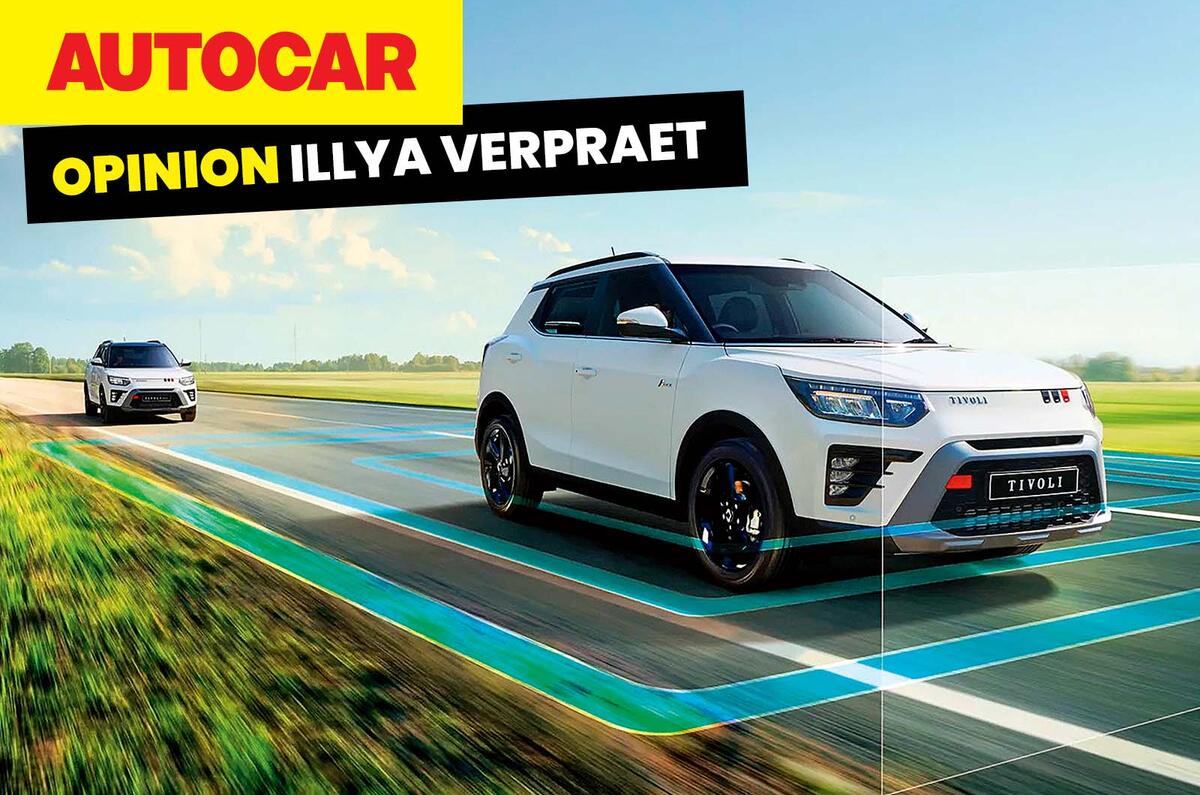Occasionally you see people giving their dog a stern talking to for tugging at the leash, barking at a goose or engaging in other dog-typical behaviour.
Part of me wants to say “the dog doesn’t understand!”, but I don’t, because that would be weird. Also I do understand the urge to chastise something for only doing what its innate but relatively simple evolutionary programming tells it to do – particularly given that many modern cars come with adaptive cruise control.
I often find myself shouting at a test car: “Just go 70mph, you bastard!” Who decided that adaptive cruise control is a superior version of normal cruise control, rendering the latter obsolete? Some cars still let you switch between the two, but adaptive is the default and only option with most these days.
Adaptive cruise control can be quite useful in dense traffic, when you’ve got no choice but to just stay in your lane and go with the flow. At almost any other time on the motorway, though, I find ‘dumb’ cruise control far more relaxing: Just set it to 70mph, and when the distance to the car in front becomes uncomfortable, indicate right and overtake.
If you want to do that and maintain good lane discipline with adaptive cruise control, you need to guess when the car ahead is going to start to slow and either override it with the accelerator or move to the right lane sooner than would be ideal.
That’s not to mention the stress caused by the sensors seeing ghosts and applying the brakes for no reason or deciding to slow down because there’s a slight curve in the road.
Unless you’re happy to be a cruise control zombie mindlessly sitting in the middle lane at 65mph with another car glued to your rear bumper, adaptive cruise control actually requires more brainpower, effort and general babysitting from the driver. I’ve spoken to several colleagues who feel the same way about cruise control – but maybe we’re in a control-freak motoring journalist bubble.
Sure, you could just not bother and use the good old accelerator pedal to manage your speed, but in a lot of cars that’s surprisingly hard, because turbo lag, hybrid systems and a ‘sporty’ throttle map can conspire to make maintaining a constant speed quite difficult. Anyway, is it too much to ask that convenience features are actually, I don’t know, convenient?
The broader issue here is ‘smart’ technology trying to make things easier by automating them but not actually being quite smart enough to do it well. It’s not just cruise control; some BMWs and Toyotas have automatic heated and cooled seats.
The idea is that you never have to press a button again (luxury! Also, no more need to make a button, so profit!), because just at the point where you’re starting to feel cold, the seat starts to warm up. My experience of these features is actually being confused by why the heated seats have randomly stopped working.
Then there are Volvos that gaslight their drivers with a ‘contextual’ shortcut bar, which shows you the buttons the car thinks you might find useful at any given moment: “I must be going insane: I swear there was a shortcut for opening the glovebox last time I looked.”
Like a dog that can identify and retrieve a specific stick that its owner has thrown into the bushes, the intelligence of these systems can seem quite impressive in a certain light – but you wouldn’t trust them to drive a car.
Unlike dogs, cars have settings menus, so you should be able to turn them on and off as you please. Bafflingly, though, you often can’t. For now, shouting will have to suffice. Maybe at some point, the voice control will get the message.




Join the debate
Add your comment
Mum has a new Aygo X and it's got all the lane assistance this and anti sleep alert that, she loves it, and when describing it all I had to say it sounds nightmare ish.
Cruise control is a necessary evil, where cameras and such punish you for using your judgement about speed. So you instead just drive at whatever limit is posted. You learn to judge when the adaptive one us catching up and to overtake. Mine has a neat trick of giving you a warning in the HUD a couple of seconds before the brakes are applied as you get nearer.